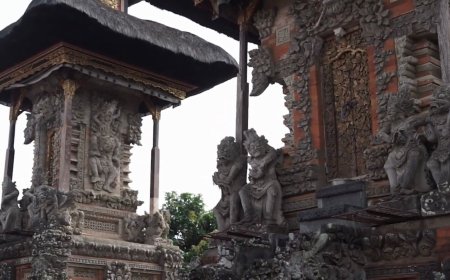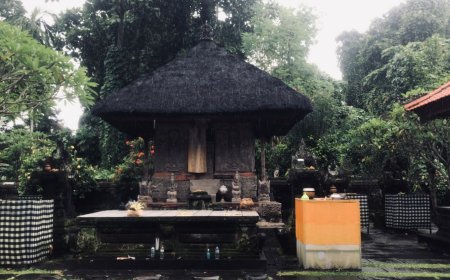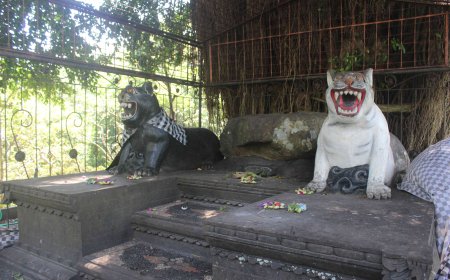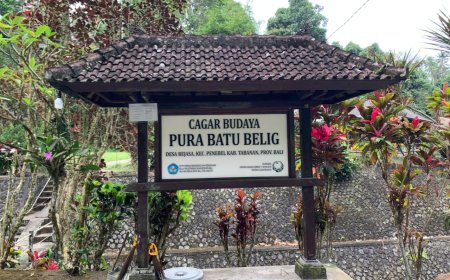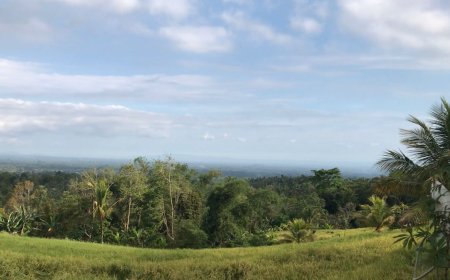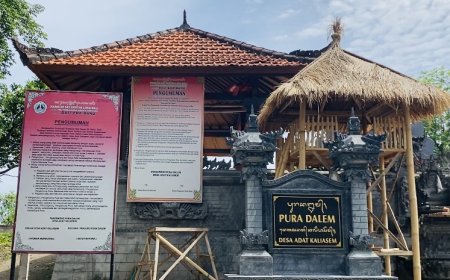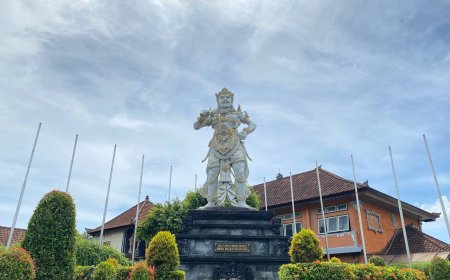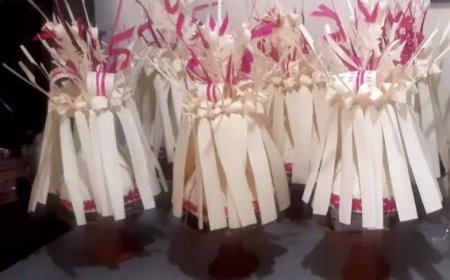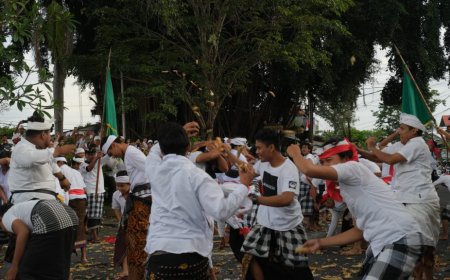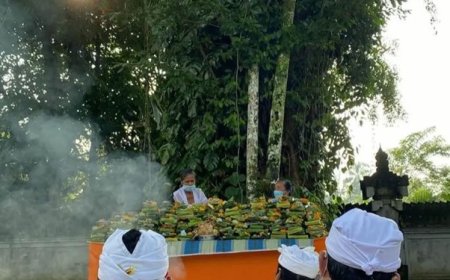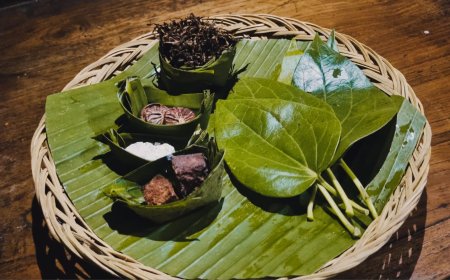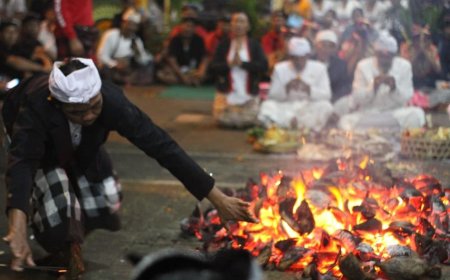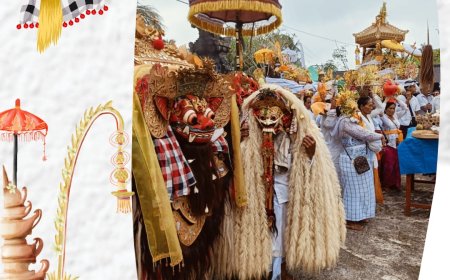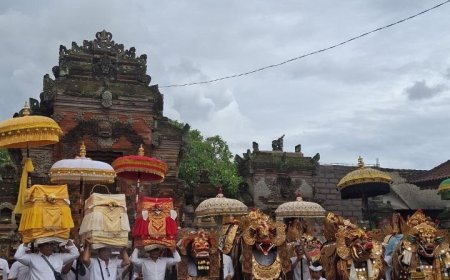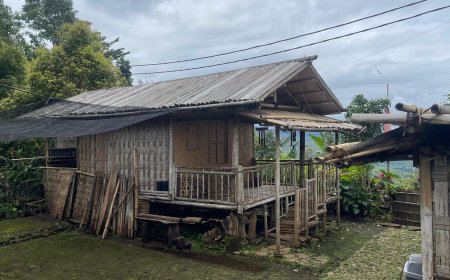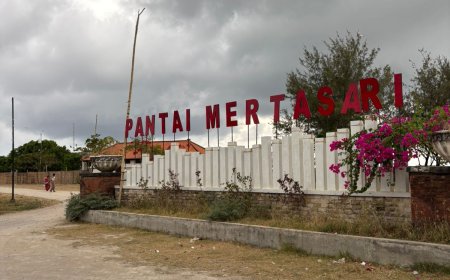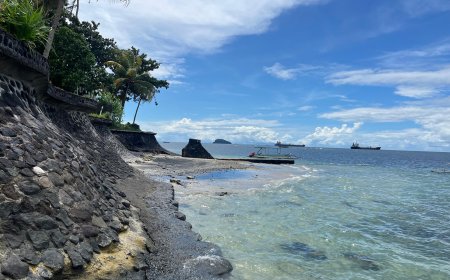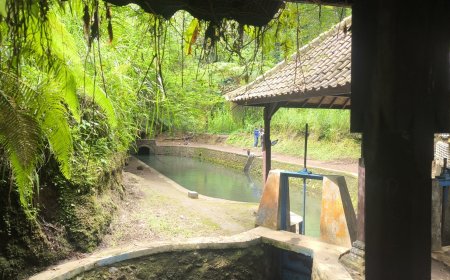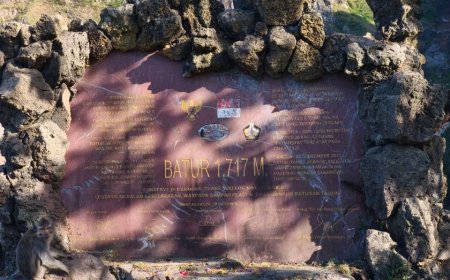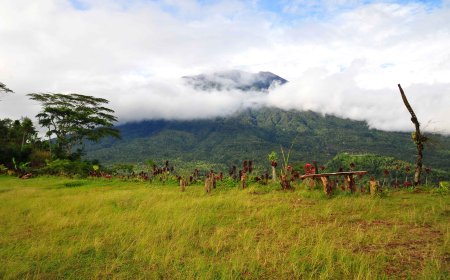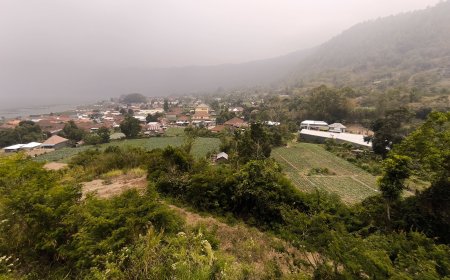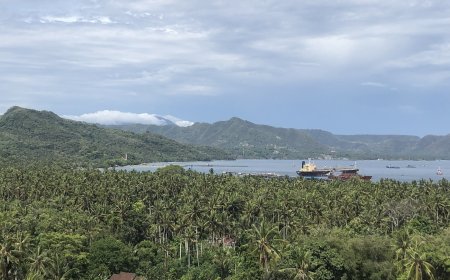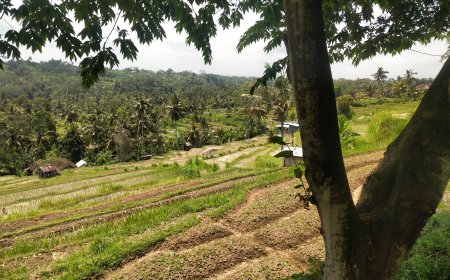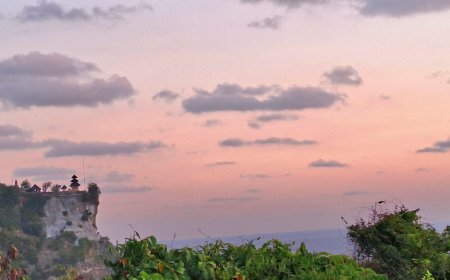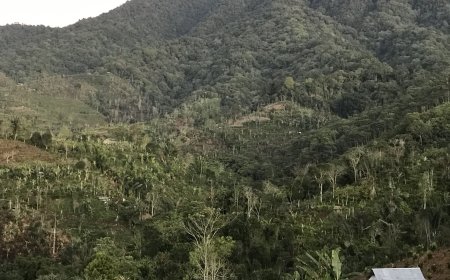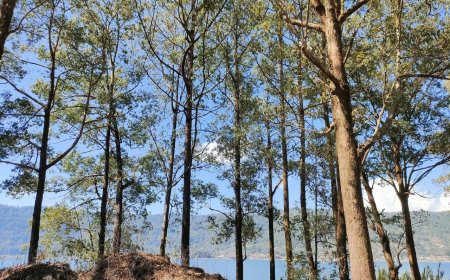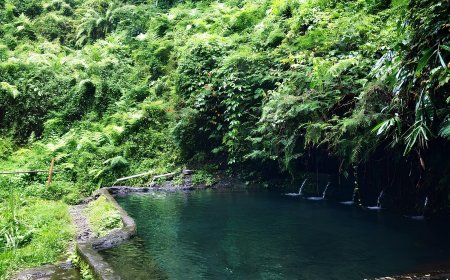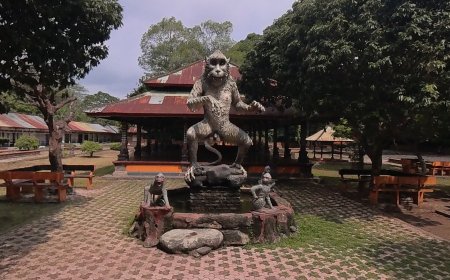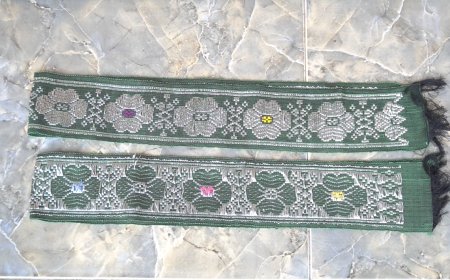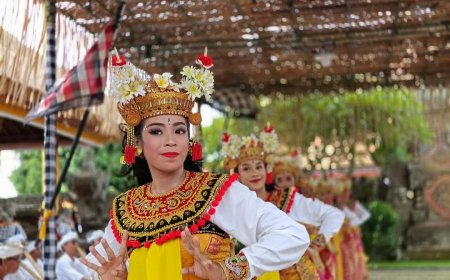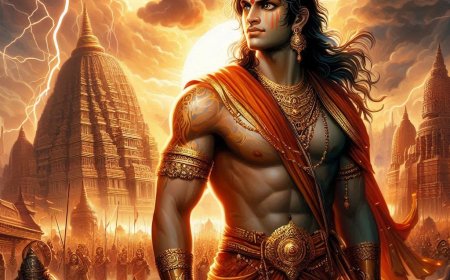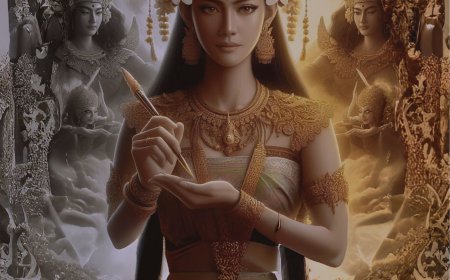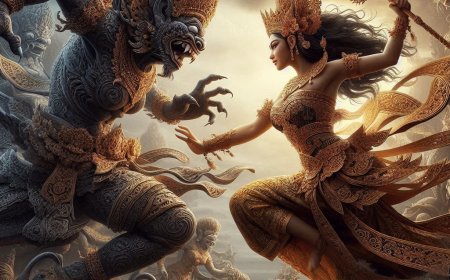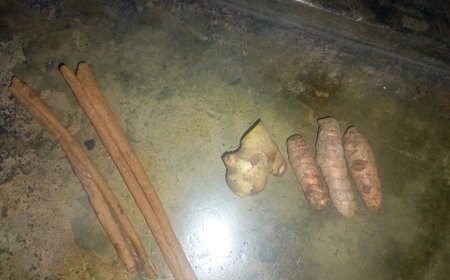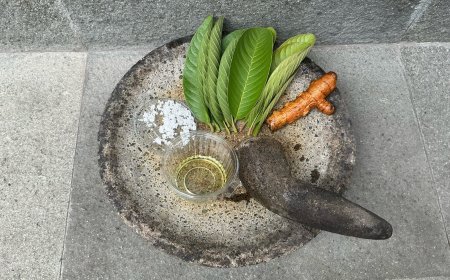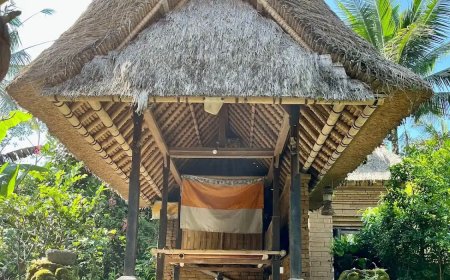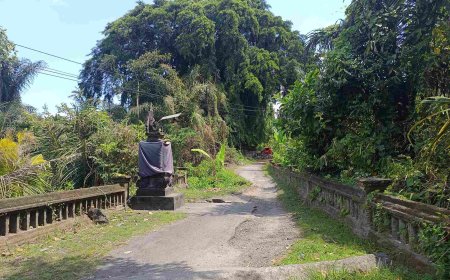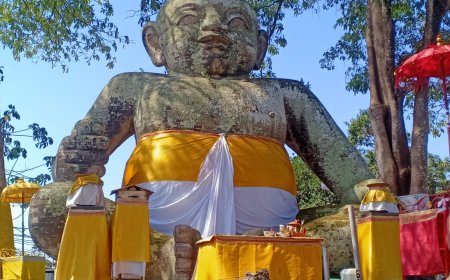Nunas Tirta Penyuda and Tari Poleng Katekok Jago Baris: Two Unique Local Wisdoms in Darmasaba Village
Darmasaba Village is a traditional village located in Abiansemal District, Badung Regency, Bali. This village has several unique traditions such as the Nunas Tirta Penyuda which is performed every day after Galungan and the Baris Poleng Katekok Jago Dance tradition which is a sacred dance which is usually used during the Dewa Yadnya and Pitra Yadnya ceremonies.
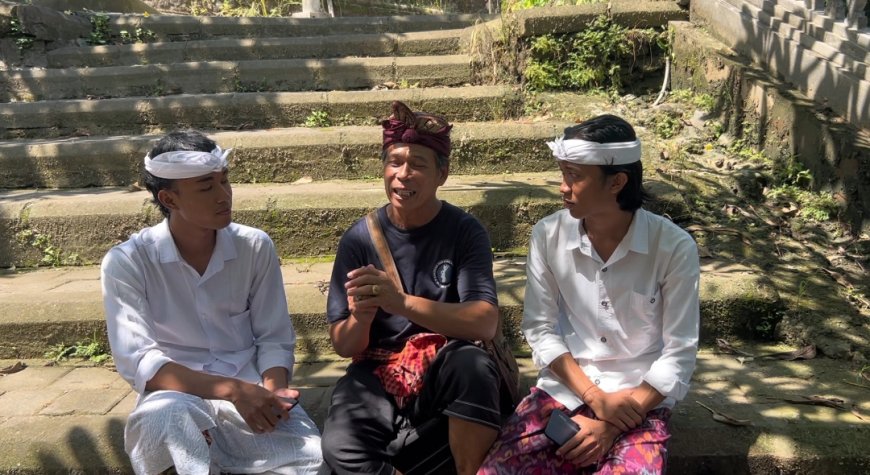
Darmasaba Village is a traditional village located in Abiansemal District, Badung Regency, Bali. This village has a unique tradition called nunas tirta sukada, this tradition is carried out after Galungan Day or precisely on umanis galungan as said by the Bendesa Adat of Darmasaba Village, "So if there is a tradition in the Darmasaba Traditional Village, there is a tradition of nunas tirta penyuda for everyone in Umanis Galungan, this tirta penyuda is in the morning shoot, tomorrow morning from five o'clock the nunas tirta will be here in Taman Beiji, after this nunas tirta in Taman Beiji Then in each Jeroan, this tirta is carried out in the pelinggih-pelinggih first. After that, there is a new shrine at home, after that the family comes to Nunas Tirta Penyuda" he said
Nunas tirta penyuda is a tradition of asking for holy water (tirta) which comes from a spring in Darmasaba Village, called Penyuda. This holy water is believed to have magical powers and blessings to cleanse oneself of negative influences and improve health and well-being.
This tradition is carried out by walking to the Penyuda spring, which is held at Taman Beiji Cengana Temple. The residents brought prayer equipment, such as offerings, incense, jugs and bottles. Arriving at the spring, the residents prayed at the temple
After praying, the residents took holy water from the spring using jugs or bottles, which they then took back to their homes. This holy water is used for bathing, drinking, or washing items that are considered important, such as clothing, jewelry, or weapons.
The Nunas Tirta Penguda tradition means that humans must always be clean physically and mentally, and grateful for all the blessings given by God. This tradition is also a form of respect for the ancestors and the gods who reside at the water source.
The tradition of nunas tirta penyeda has been carried out by the people of Darmasaba Village for generations, and is still preserved today. This tradition is one of the characteristics and uniqueness of Darmasaba Village, which shows the rich culture and local wisdom of the Hindu community in Bali. Apart from this tradition, there is also a tradition in the form of the Tari Baris Poleng Katekok Jago.
Tari Baris Poleng Katekok Jago is a traditional dance from Bali which displays group compositions in marching, row and row formations. It is called Baris Poleng Katekok Jago because the clothes and accessories used are predominantly black and white "poleng" striped colors.
According to Bendesa, the Darmasaba Village tradition says "Tari Katekok Baris is held at the Arya Bang Pinatih Temple. The Katekok Baris is used during the ageng work during the Pitra Yadnya ceremony or Ngaben ageng, meaning, this ceremony is at the mapranawa level."
So Tari Baris Poleng Katekok Jago has a function as a dance in the Pitra Yadnya ceremony as said by Mr Bendesa Adat Darmasaba Village, but apart from the Pitra Yadnya ceremony, the Baris Poleng Katekok Jago Dance is also used in the Dewa Yadnya ceremony. This dance is also a sacred dance that is used in yadnya ceremonies at the Intermediate and Primary levels as a symbol of the knight who escorts the descent of the Gods to earth at every Dewa Yadnya ceremony, such as Karya Ngenteg Linggih, Karya Padudusan Agung, Karya Padudusan Alit and so on.
In Hindu religious life in Bali, there are three types of poleng cloth, namely: Saput Poleng Rwabhineda, Saput Poleng Tridatu, and Saput Poleng Sudamala. The application of poleng clothing in the Katekok Jago Poleng Line is dominated by the use of rwabineda poleng and also sudhamala poleng. In rwabineda poleng it is in the form of transverse strips as decoration on the design of trouser legs and sleeves, while sudhamala poleng becomes decoration on shawls such as poleng tridatu cloth, ancient fabrics such as cepuk, gringsing and the like, becomes a strong additional decoration giving a haunted and ancient impression to the display of the figures of each dancer.
As said by Mr. Bendesa above, the Baris Poleng Katekok Jago Dance in Darmasaba Village is used in the Pitra Yadnya (ngaben) ceremony, but this dance is only intended for people who have the highest caste (colour chess). Maknanta is a Poleng Katekok Jago Line Dancer who will be a soldier who escorts spirits to their final destination or moksa.
